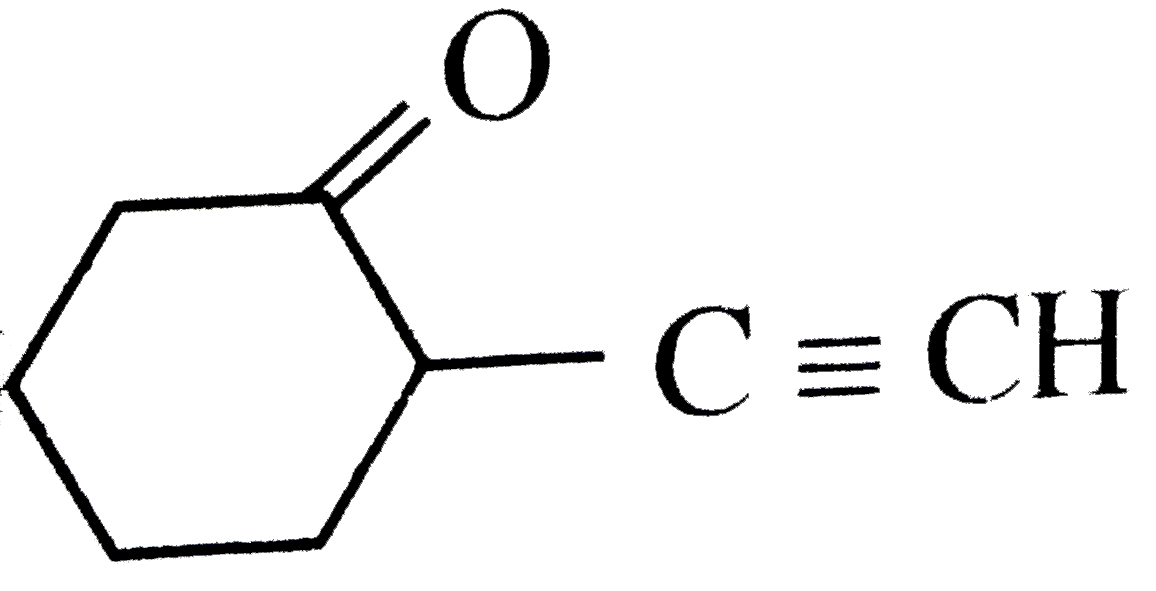What is (Z) is the following sequence of reaction?
HC≡CH(i)2NaNH2(ii)2CH3I−−−−−−−−−−−−−−→(X)HgSO4,H2SO4−−−−−−−−→(Y)(i)NaOH+Br3(ii)H3O+−−−−−−−−−−−−−−−−→(Z)
CH3CH2CH2CHO
CH3CH2COCH3
CH3CH2COOH
CH3CH2CH2COOH
The correct Answer is:C
To determine the final product (Z) in the given sequence of reactions, we will break down the steps as follows:
Step 1: Reaction of Acetylene with Sodium Amide and Methyl Iodide
1. Starting Material: Acetylene (HC≡CH)
2. Reagents: 2 moles of Sodium Amide (NaNH₂) and 2 moles of Methyl Iodide (CH₃I)
3. Reaction: Sodium amide is a strong base and will deprotonate the acetylene, removing both acidic hydrogen atoms. This forms disodium acetylene (Na₂C₂H₂).
4. Substitution: The disodium acetylene will then react with 2 moles of methyl iodide, leading to the substitution of the sodium ions with methyl groups.
Product (X): The product after this reaction will be 1,2-dimethylacetylene (CH₃C≡CCH₃).
Step 2: Hydration of 1,2-Dimethylacetylene
1. Reagents: Mercury(II) sulfate (HgSO₄) and sulfuric acid (H₂SO₄)
2. Reaction: The addition of water (hydration) occurs across the triple bond of the alkyne, forming an enol intermediate.
3. Tautomerization: The enol will tautomerize to form a more stable keto form.
Product (Y): The product after this step will be 2-pentanone (CH₃C(=O)C₂H₅).
Step 3: Haloform Reaction
1. Reagents: Bromine (Br₂) and Sodium Hydroxide (NaOH)
2. Reaction: The presence of a methyl ketone (2-pentanone) will undergo a haloform reaction. This involves the halogenation of the methyl group adjacent to the carbonyl, followed by hydrolysis.
3. Final Step: The addition of acid (H₃O⁺) will convert the resulting sodium salt into the corresponding carboxylic acid.
Product (Z): The final product after this reaction will be propanoic acid (CH₃CH₂COOH).
Final Answer
Thus, the final product (Z) is Propanoic Acid (CH₃CH₂COOH).
---
1. Starting Material: Acetylene (HC≡CH)
2. Reagents: 2 moles of Sodium Amide (NaNH₂) and 2 moles of Methyl Iodide (CH₃I)
3. Reaction: Sodium amide is a strong base and will deprotonate the acetylene, removing both acidic hydrogen atoms. This forms disodium acetylene (Na₂C₂H₂).
4. Substitution: The disodium acetylene will then react with 2 moles of methyl iodide, leading to the substitution of the sodium ions with methyl groups.
1. Reagents: Mercury(II) sulfate (HgSO₄) and sulfuric acid (H₂SO₄)
2. Reaction: The addition of water (hydration) occurs across the triple bond of the alkyne, forming an enol intermediate.
3. Tautomerization: The enol will tautomerize to form a more stable keto form.
1. Reagents: Bromine (Br₂) and Sodium Hydroxide (NaOH)
2. Reaction: The presence of a methyl ketone (2-pentanone) will undergo a haloform reaction. This involves the halogenation of the methyl group adjacent to the carbonyl, followed by hydrolysis.
3. Final Step: The addition of acid (H₃O⁺) will convert the resulting sodium salt into the corresponding carboxylic acid.
Thus, the final product (Z) is Propanoic Acid (CH₃CH₂COOH).
Similar Questions
The final product (Z) is the following sequence of reaction CH3CH2NH2HNO2−−−→(X)Socl2−−→(Y) is NH3−−→(Z)
View SolutionIdentify the final product (Z) in the following sequence of reactions :
Me2C=O+HCN→(X)H3O+−−−→(Y)H2SO4−−−→
View SolutionWhat is Z in the following sequence of reactions?
ZPCl3−−→Xalc.KOH−−−−−→Y(i)Conc.H2SO4−−−−−−−−−→(ii)H2OboilZ
View SolutionThe end product (B) in the following sequence of reactions is CH3ClKCN−−→AH2O/H+−−−−−→B
View SolutionConsider the following sequence of reactions
C2H5C≡CHCH3MgBr−−−−−→A(1)HCHO−−−−−−→(2)H2O+B
The product (B) is
View Solution
(i)NaNH2,NH3(ii)CH3−Br−−−−−−−−−−−−−−−−−−−→(A)(H2 Lindlar'scatalyst)−−−−−−−−−−−−−−→B
View SolutionWrite the product of following reactions :
(i) CH3−C≡C−CH=CH2O3/H2O2−−−−−→ , (ii) , O3/H2O2−−−−−→
, O3/H2O2−−−−−→
View SolutionIn the reaction CH3−C≡C−H(i)NaNH2/NH3(l)−−−−−−−−−−−−−→(A)CH3−CH2−CH2−Br−−−−−−−−−−−−−→(B) The product B is
View Solution
∣HgSO4/H2SO4−−−−−−−−−−→(A)2molofMeMgBr/H3O⊕−−−−−−−−−−−−−−→(B). (B) is :
View SolutionIn the following sequence of reaction, the product C is
CH3−BrKCN−−→AH2O+−−−→BLiAlH4−−−→EtherC
View Solution
